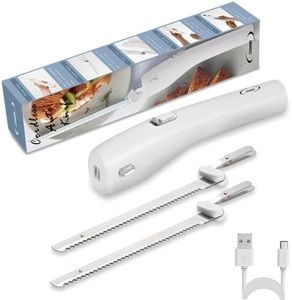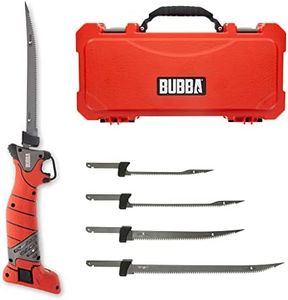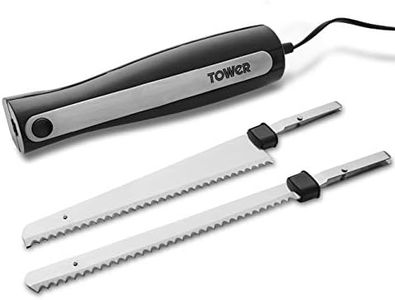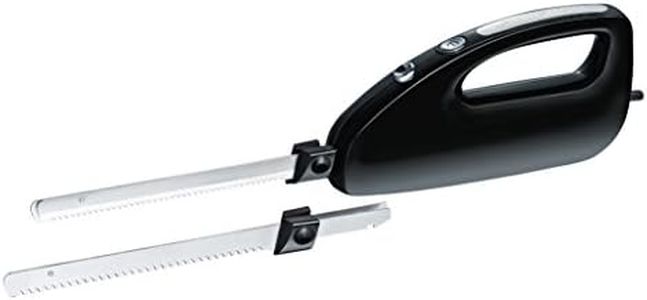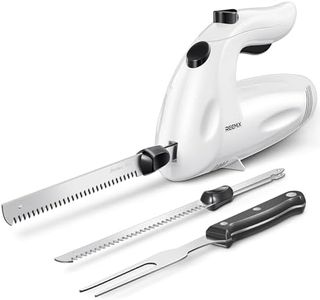We Use CookiesWe use cookies to enhance the security, performance,
functionality and for analytical and promotional activities. By continuing to browse this site you
are agreeing to our privacy policy
10 Best Electric Fillet Knives
From leading brands and best sellers available on the web.Buying Guide for the Best Electric Fillet Knives
Choosing an electric fillet knife is all about matching the tool to how you plan to use it. Electric fillet knives make it easier and faster to clean and process fish, especially compared to manual knives. To pick the best fit, consider what types and sizes of fish you’ll be working with, how often you’ll use the knife, and any comfort or convenience features you might need. Understanding the key specifications will help you find a knife that’s both effective and easy to use.Blade MaterialBlade material refers to what the blade is made from, most commonly stainless steel or high-carbon steel. This is important because the blade material affects sharpness, durability, and resistance to rust. Stainless steel is common for its rust resistance and easy cleaning, while high-carbon steel stays sharper longer but can require more care. If you'll be filleting saltwater fish or those with tougher scales, a rust-resistant blade is especially beneficial. For most users, a high-quality stainless steel blade is a practical choice.
Blade LengthBlade length determines how easily the knife can handle small, medium, or large fish. Shorter blades (around 6 inches) give more control for small fish or detail work, while longer blades (up to 9 or 10 inches) make quick work of bigger fish. If you primarily work with panfish or smaller species, opt for a shorter blade. For larger species, like salmon or catfish, a longer blade helps with efficient filleting. Choose based on the fish size you expect to prepare most often.
Motor PowerMotor power refers to how strong the electric motor in the knife is, affecting how easily it can cut through bones and thick fillets. More powerful motors make cutting faster and reduce hand fatigue, but can be heavier or noisier. For occasional or light use, average power will suffice, but if you regularly process large quantities or tough fish, look for a model with a higher-powered motor. Match the motor strength to your workload for comfortable, smooth cutting.
Handle Comfort and GripHandle comfort and grip describe how easy and comfortable it is to hold and control the knife, even with wet or slippery hands. This affects safety and precision. Handles made with ergonomic designs and non-slip textures are best for long or frequent sessions. If you plan extended filleting or value safety, focus on a handle that feels secure and comfortable in your hand, possibly testing the feel in person if possible.
Corded vs CordlessElectric fillet knives come in corded versions that must be plugged in or cordless models powered by batteries. Corded knives usually provide constant, reliable power for longer jobs but can limit mobility and require a nearby outlet. Cordless knives offer more freedom and convenience, especially when fishing away from power sources, but depend on battery life. If you often clean fish at home, corded may be fine; if you need flexibility at lakes or docks, cordless is often preferred.
Ease of CleaningEase of cleaning refers to how simple it is to disassemble, wash, and maintain the knife after use. Some models have removable blades or dishwasher-safe parts, making cleanup much easier, which helps prevent rust and odors. If you value convenience or plan to fillet frequently, look for knives with quick-release or dishwasher-friendly blades to make post-use maintenance hassle-free.

